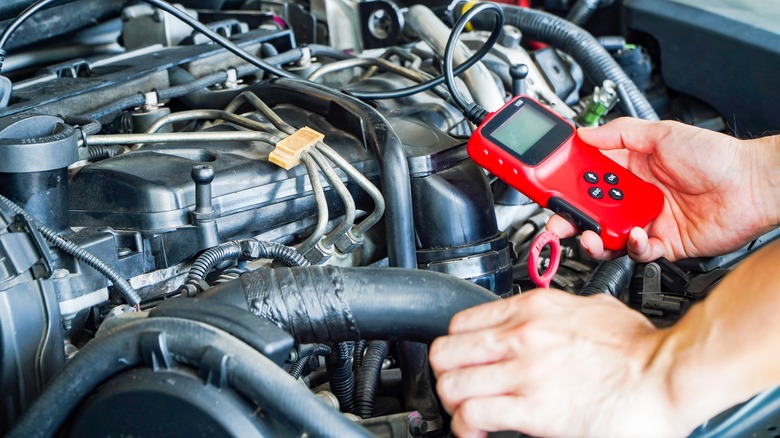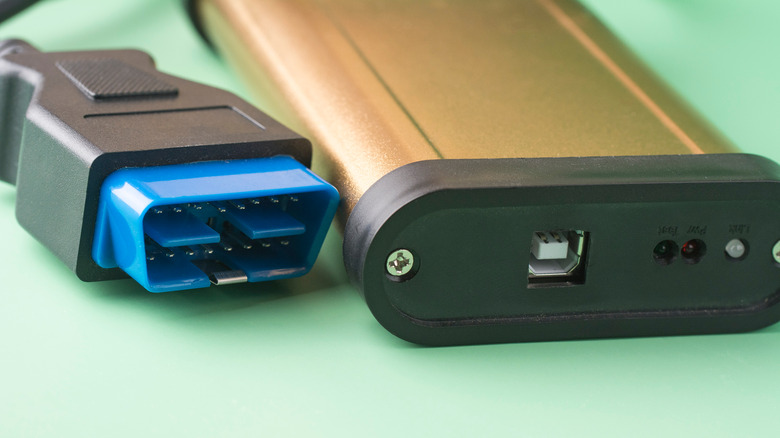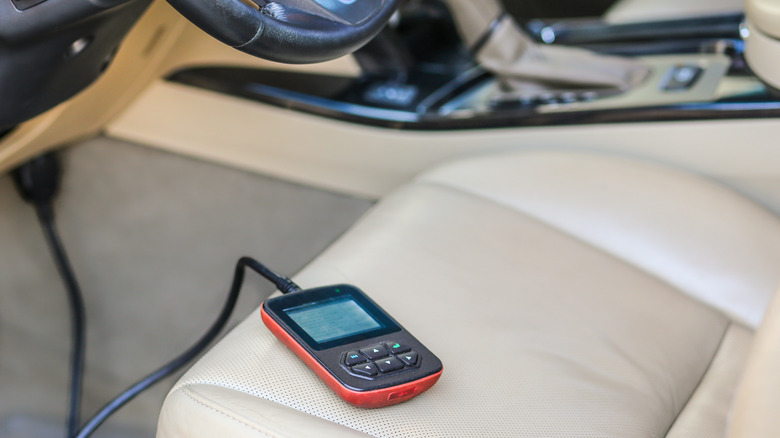How To Use A Code Reader To Diagnose Your Car
Code readers are diagnostic tools that every car owner should consider owning. Having one of these is as important as carrying a spare tire or a fire extinguisher in the trunk. Back in the day, before these tools existed, you'd be cruising down the highway, and suddenly, the Check Engine light would decide to come on, causing a level of confusion. Do you hit up the nearest mechanic or hope your car makes it to your destination without any drama?
Even if you manage to find a mechanic, there's the possibility that they cannot promptly attend to your car because they're occupied with other cars, or some shady ones might try to exploit the situation, charging for services unrelated to your car's actual issues. That's why it's handy to know how to use a code reader for self-diagnosis. This lets you spot issues early, keeping your vehicle in good shape. When you're in a tight spot and your car suddenly starts sparking warning symbols, you can find a suitable parking spot and use your code reader to figure out if it's a serious problem or just a minor issue that can be fixed later.
Choosing a Code Reader
Before you buy a code reader for independent car diagnostics, you have to understand that there are different types out there, and the one you will be selecting should fit your needs and, most importantly, be compatible with your vehicle. Some code readers are basic. They scan, read, and interpret Diagnostic Trouble Codes (DTCs) coming from a car's on-board computer. These DTCs are numeric codes that are stored in the car's computer when a problem is detected. By analyzing DTCs, a car code reader can help to identify the cause of a car's problem.
There are also more advanced ones with enhanced features. They not only scan and interpret DTCs but can clear these codes, reset the check engine light, and access live data directly from the car's computer. Plus, certain high-end code readers have their own smartphone apps. This allows users to use their smartphones to share DTCs and other diagnostic data with mechanics conveniently or view live data from their car's computer at all times as long as the code reader is connected to the car.
Using a Code Reader
All code readers connect to your vehicle in the same manner. Grab your code reader, and find the ODB-II port under your dashboard near the steering wheel. It is important to make sure this connection is established while the vehicle is parked. Under no circumstances should you try to connect the reader while the car is moving, as this could cause a distraction and lead to accidents. Once the reader is connected, follow the steps on it to scan for trouble codes. If it sniffs out any issues, it's going to flash them on its screen.
You can then check a code lookup table to decipher what those codes mean and figure out what repairs you need. If you decide to use a Wireless Code Reader that uses Bluetooth or Wi-Fi to link to the OBD-II port, you should download a car scanner app. Go to your device's Bluetooth or Wi-Fi settings, connect your phone to the code reader's network, and, once connected, launch the installed car doctor app. Within the app, you will find information about your vehicle, including general details, trouble codes, records, real-time engine response time, car speed, and various other settings and parameters.


